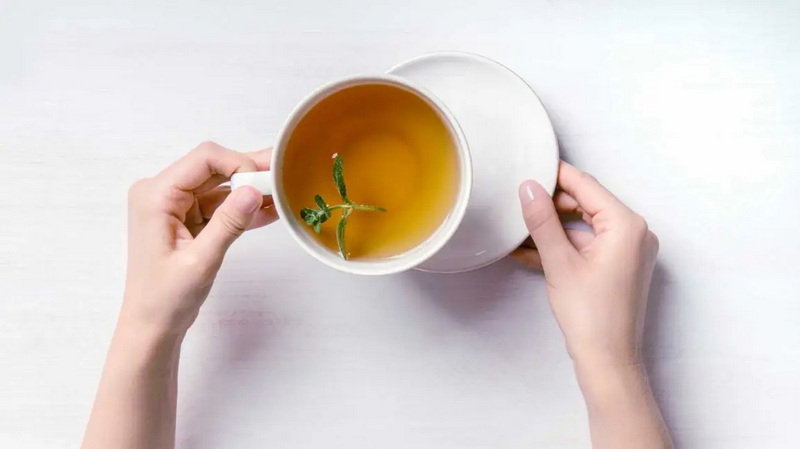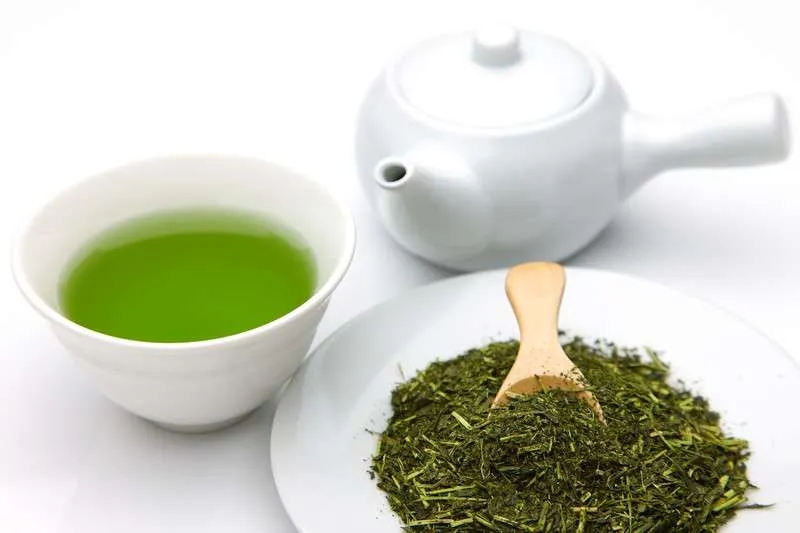Content Menu
● The Healing Properties of Green Tea
>> Reducing Inflammation and Pain
>> Promoting Wound Healing
>> Antibacterial Effects
● How to Use Green Tea After Tooth Extraction
>> Timing is Key
>> Temperature Considerations
>> Green Tea Mouthwash
>> Green Tea and Hyaluronic Acid Gel
● Precautions and Considerations
● The Science Behind Green Tea's Effectiveness
>> Anti-inflammatory Action
>> Antioxidant Properties
>> Collagen Production
● Comparing Green Tea to Other Post-Extraction Remedies
● Long-term Benefits of Green Tea for Oral Health
● Conclusion
● Frequently Asked Questions (FAQ)
>> 1. How soon after tooth extraction can I drink green tea?
>> 2. Can green tea help prevent dry socket after tooth extraction?
>> 3. Is it safe to use green tea bags on the extraction site?
>> 4. How do I make a green tea rinse for after tooth extraction?
>> 5. Are there any side effects of using green tea after tooth extraction?
● Citations:
Green tea has long been celebrated for its numerous health benefits, ranging from its antioxidant properties to its potential role in weight management. However, when it comes to dental procedures like tooth extractions, the question arises: Is green tea good after tooth extraction? This article will explore the potential benefits and considerations of consuming green tea following a tooth extraction, backed by scientific research and expert opinions.
Tooth extraction is a common dental procedure that can leave patients feeling uncomfortable and in need of proper aftercare. While traditional advice often focuses on avoiding certain foods and beverages, recent studies have shed light on the potential advantages of incorporating green tea into post-extraction care[1][2][3].

The Healing Properties of Green Tea
Green tea, derived from the Camellia sinensis plant, is rich in polyphenols, particularly catechins, which possess potent antioxidant, anti-inflammatory, and antimicrobial properties[4]. These characteristics make green tea a potentially valuable ally in the healing process following tooth extraction.
Reducing Inflammation and Pain
One of the primary concerns after tooth extraction is managing inflammation and pain. Research has shown that green tea extract can significantly reduce postoperative pain and the need for analgesics following the surgical removal of impacted mandibular third molars[2]. In a double-blinded randomized controlled trial, patients who applied green tea extract to the surgical site experienced lower pain scores and required fewer pain medications compared to those in the control group.
Promoting Wound Healing
The catechins in green tea, particularly epigallocatechin gallate (EGCG), have been found to promote wound healing by stimulating the production of growth factors and enhancing the formation of new blood vessels[4]. This property could potentially accelerate the healing of the extraction site, leading to faster recovery times for patients.
Antibacterial Effects
Maintaining oral hygiene after tooth extraction is crucial to prevent infection. Green tea's natural antibacterial properties can help combat harmful oral bacteria, reducing the risk of post-extraction complications[3]. Studies have demonstrated that green tea catechins can inhibit the growth of bacteria associated with periodontal diseases and dental caries.
How to Use Green Tea After Tooth Extraction
While the benefits of green tea are promising, it's essential to use it correctly after a tooth extraction to maximize its potential benefits and avoid any complications.
Timing is Key
Immediately after tooth extraction, it's crucial to allow a blood clot to form in the socket. Therefore, it's recommended to wait at least 24 hours before introducing any form of green tea to the affected area[7]. This waiting period helps ensure that the initial healing process is not disrupted.
Temperature Considerations
When consuming green tea after tooth extraction, it's important to let it cool to room temperature or slightly warm. Hot beverages can interfere with the blood clot formation and potentially lead to a painful condition known as dry socket[7].
Green Tea Mouthwash
One effective way to harness the benefits of green tea after tooth extraction is by using it as a mouthwash. A study published in the Journal of Oral and Maxillofacial Surgery found that rinsing with green tea mouthwash from the first to seventh postoperative day significantly reduced pain and the need for analgesics compared to a placebo mouthwash[3].
1. Brew a cup of green tea using loose leaves or a tea bag.
2. Allow it to cool to room temperature.
3. Gently rinse your mouth with the tea for 30 seconds, being careful not to disturb the extraction site.
4. Repeat this process 2-3 times daily, starting from the day after your extraction.
Green Tea and Hyaluronic Acid Gel
Recent research has explored the combined effects of green tea and hyaluronic acid in promoting healing after tooth extraction. A study published in 2024 found that a gel formulation containing both green tea and hyaluronic acid significantly improved soft tissue and bone healing post-extraction[5]. This innovative approach offers a promising adjunctive therapy for enhancing postoperative recovery.

Precautions and Considerations
While green tea can offer numerous benefits after tooth extraction, it's important to keep the following precautions in mind:
1. Consult your dentist: Always follow your dentist's specific post-extraction care instructions and consult them before incorporating green tea into your recovery regimen.
2. Avoid tea bags: Do not place tea bags directly on the extraction site, as this can introduce bacteria and disrupt the healing process.
3. Monitor caffeine intake: Green tea contains caffeine, which can interfere with sleep and potentially slow healing. Opt for decaffeinated green tea if you're sensitive to caffeine.
4. Be gentle: When using green tea as a mouthwash, avoid vigorous swishing or spitting, which can dislodge the blood clot.
5. Watch for allergies: Although rare, some individuals may be allergic to green tea. Discontinue use and consult your dentist if you experience any adverse reactions.
The Science Behind Green Tea's Effectiveness
To understand why green tea may be beneficial after tooth extraction, it's important to delve into the scientific mechanisms at play. The primary compounds responsible for green tea's therapeutic effects are catechins, particularly epigallocatechin-3-gallate (EGCG)[4].
Anti-inflammatory Action
EGCG has been shown to inhibit the production of pro-inflammatory cytokines and enzymes, effectively reducing inflammation in the oral cavity[6]. This anti-inflammatory action can help alleviate swelling and discomfort following tooth extraction.
Antioxidant Properties
The powerful antioxidants in green tea help neutralize free radicals, which are produced in excess during the healing process. By reducing oxidative stress, green tea may accelerate tissue repair and regeneration at the extraction site[4].
Collagen Production
Studies have demonstrated that green tea catechins can stimulate collagen production, a crucial protein for wound healing. Enhanced collagen synthesis may lead to faster closure of the extraction wound and improved tissue strength[6].
Comparing Green Tea to Other Post-Extraction Remedies
While green tea shows promise as a post-extraction remedy, it's worth comparing its effectiveness to other commonly recommended treatments:
| Remedy | Pain Relief | Anti-inflammatory | Antibacterial | Ease of Use |
| Green Tea | High | High | High | Easy |
| Salt Water Rinse | Moderate | Moderate | Moderate | Easy |
| Chlorhexidine Mouthwash | Moderate | Low | High | Easy |
| Ice Pack | High | High | N/A | Moderate |
| Prescription Pain Medication | High | Moderate | N/A | Easy |
As the table illustrates, green tea offers a well-rounded approach to post-extraction care, combining pain relief, anti-inflammatory properties, and antibacterial action in an easy-to-use form.
Long-term Benefits of Green Tea for Oral Health
Beyond its immediate post-extraction benefits, incorporating green tea into your regular oral care routine can have long-lasting positive effects on your dental health[6]. Regular consumption of green tea has been associated with:
- Reduced risk of tooth decay
- Improved gum health
- Fresher breath
- Lower incidence of oral cancer
Conclusion
The evidence suggests that green tea can indeed be beneficial after tooth extraction when used appropriately. Its anti-inflammatory, antibacterial, and wound-healing properties make it a valuable addition to post-extraction care. By reducing pain, promoting healing, and potentially lowering the risk of complications, green tea offers a natural and effective complement to traditional aftercare methods.
However, it's crucial to remember that while green tea can be a helpful aid in recovery, it should not replace professional dental advice or prescribed medications. Always consult with your dentist before incorporating green tea or any new remedy into your post-extraction care routine.
As research continues to explore the potential of green tea in dental health, we may see even more innovative applications in the future, such as the promising green tea and hyaluronic acid gel. For now, a cool cup of green tea or a gentle green tea rinse might just be the soothing, healing boost your mouth needs after a tooth extraction.

Frequently Asked Questions (FAQ)
1. How soon after tooth extraction can I drink green tea?
It's generally recommended to wait at least 24 hours after tooth extraction before consuming any tea, including green tea. This allows time for the initial blood clot to form and stabilize. When you do start drinking green tea, ensure it's at room temperature or slightly warm to avoid disturbing the healing site.
2. Can green tea help prevent dry socket after tooth extraction?
While green tea isn't a guaranteed prevention method for dry socket, its anti-inflammatory and antibacterial properties may help reduce the risk. The tannins in green tea can promote blood clotting, which is essential for preventing dry socket. However, it's crucial to follow all post-extraction care instructions provided by your dentist.
3. Is it safe to use green tea bags on the extraction site?
It's not recommended to place tea bags directly on the extraction site, as this can introduce bacteria and potentially disrupt the healing process. Instead, consider using a cooled green tea rinse or following your dentist's specific instructions for post-extraction care.
4. How do I make a green tea rinse for after tooth extraction?
To make a green tea rinse, brew a cup of green tea using loose leaves or a tea bag, then allow it to cool to room temperature. Gently swish the cooled tea in your mouth for about 30 seconds, being careful not to disturb the extraction site. Repeat this 2-3 times daily, starting from the day after your extraction.
5. Are there any side effects of using green tea after tooth extraction?
While green tea is generally safe, some people may experience side effects such as staining of teeth or temporary taste alterations. In rare cases, individuals may be allergic to green tea. If you experience any unusual symptoms or discomfort, discontinue use and consult your dentist immediately.
Citations:
[1] https://pmc.ncbi.nlm.nih.gov/articles/PMC4082946/
[2] https://pmc.ncbi.nlm.nih.gov/articles/PMC10028581/
[3] https://pmc.ncbi.nlm.nih.gov/articles/PMC3720195/
[4] https://pmc.ncbi.nlm.nih.gov/articles/PMC3459493/
[5] https://www.nature.com/articles/s41598-024-57821-5
[6] https://pmc.ncbi.nlm.nih.gov/articles/PMC8797077/
[7] https://www.didsburydentalpractice.dentist/blog/can-i-drink-tea-after-tooth-extraction/
[8] https://www.medicalnewstoday.com/articles/326147






























